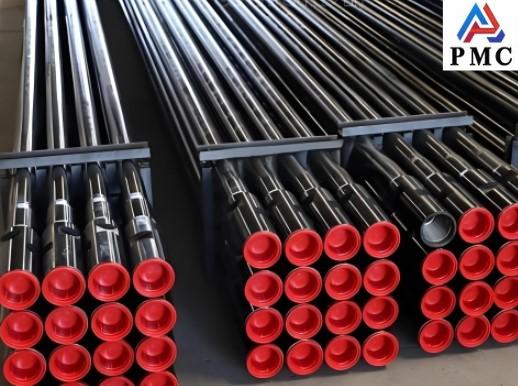
Nondestructive Testing of OCTG Drill Pipes
OCTG (oil-specific tubular goods) drill pipe, the "lifeline" of oil and gas drilling, must withstand long-term downhole high pressure, alternating loads, corrosive media (such as H₂S, CO₂), and mechanical wear. It is prone to fatigue cracks, corrosion thinning, welding defects, and other problems. Once it fails, it can lead to major accidents such as stuck drill pipe and blowout. Similar to OCTG casing pipe, which provides Structural integrity to the wellbore, drill pipe requires strict quality assurance throughout its service life. In particular, seamless pipe is widely used in both drill pipe and casing pipe because of its superior strength, uniformity, and resistance to harsh environments.
Non-destructive testing (NDT) is therefore a key means of quality control for OCTG drill pipe from factory to scrap, and must strictly follow industry standards such as API 5DP (Oil Well Drill Pipe Specification). This article will discuss the necessity and methods of nondestructive testing (NDT) for OCTG drill pipes.
Importance of nondestructive testing of OCTG drill pipe
1. Strengthening factory quality assurance: OCTG drill pipe production is prone to hidden defects such as incomplete weld penetration and thread cracks. Nondestructive testing can accurately identify these defects without damaging the structure, ensuring product compliance with standards such as API 5DP. This prevents substandard drill pipe from entering the market and eliminates subsequent risks at the source.
2. Avoid underground safety accidents: Drill pipes are subjected to high pressure, corrosion, and fatigue loads underground. Nondestructive testing can detect damage before entering the well and track the expansion of defects during service, preventing accidents such as drill pipe breakage and blowouts, thereby ensuring personnel safety and stable drilling operations.
3. Helps reduce costs and increase efficiency: Through non-destructive testing, defects can be accurately assessed, small cracks can be repaired and reused, and the use scenarios of drill pipes that do not exceed the standards can be adjusted to avoid excessive scrapping. At the same time, a "health file" is established to plan the service life and reduce the consumable costs of high-value drill pipes.

Nondestructive testing methods for OCTG drill pipes
1. Ultrasonic Testing (UT)
Application: Detects internal defects and wall thickness variations in pipes
Advantages: High penetration capability, capable of detecting internal cracks, inclusions, and wall thinning
Key Areas: Pipe, weld heat-affected zone, and thickening transition zone
2. Magnetic Particle Testing (MT)
Applications: Detecting surface and near-surface cracks in ferromagnetic materials
Advantages: High sensitivity to surface cracks, intuitive display
Key Areas: Threaded surfaces, joint transition zones, and welded joints
3. Penetrant Testing (PT)
Applications: Detecting surface defects, suitable for non-ferromagnetic materials.
Advantages: Not restricted by the material's magnetic properties, easy to operate.
Key Areas: Surfaces of stainless steel drill pipes, threaded surfaces.
4. Eddy Current Testing (ECT)
Application: Rapid screening for surface and near-surface defects
Advantage: Fast inspection speed, suitable for batch testing
Key Areas of Interest: Pipe surface corrosion and thread wear
5. Radiographic testing (RT)
Application: Detecting internal defects in welded joints
Advantage: Accurately locate defects and permanently record them
Key Areas: Friction welded joints, butt welds
Testing standards and judgment
Main standards: API 5DP, API 5CT, ISO 11960, etc.
Judgment basis:
Cracks: Surface cracks of any length are generally considered unacceptable
Wall thickness reduction: if it exceeds the standard allowable range, it must be scrapped
Weld defects: evaluated for repair or scrap based on type and size
Testing precautions
1. Ensure the surface is clean and dry, remove oil and scale.
2. Choose the right combination of detection methods to achieve comprehensive coverage.
3. Strictly implement standard operating procedures to ensure reliable results.
4. Establish complete testing records to achieve traceable management.
Read more: OCTG Drill Pipe
- 【Prev】 : Passivation Treatment Time of SMLS Pipe
- 【Next】 : Seamless Pipes for Industrial Steam


